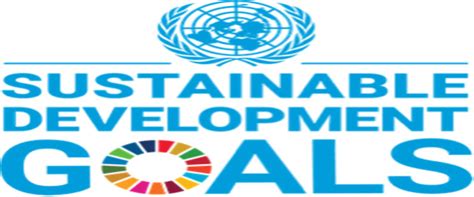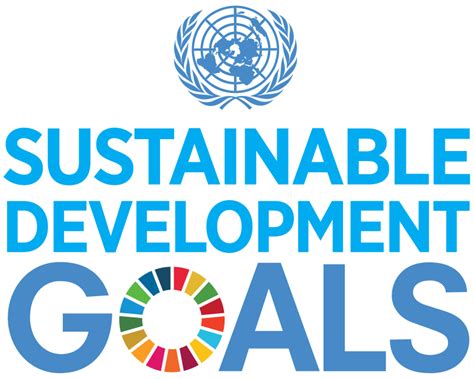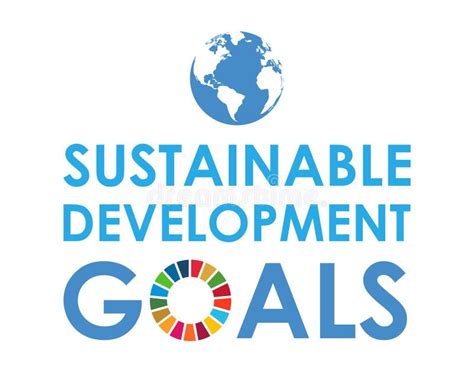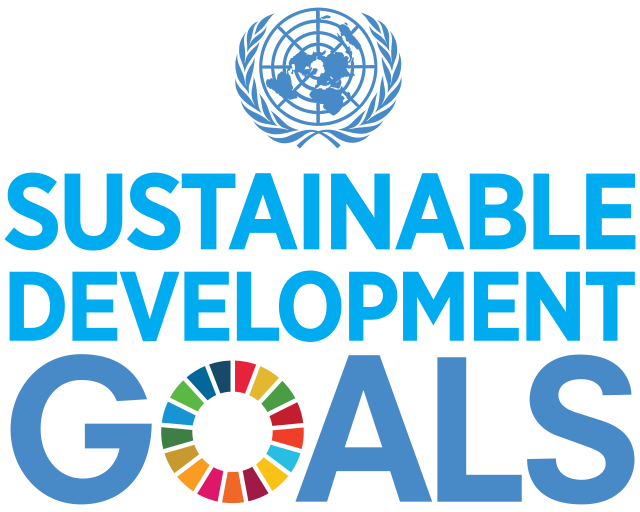The UN’s Sustainable Development Goals (SDGs) represent a global blueprint for addressing critical issues such as climate change and sustainability. As the planet faces unprecedented climate challenges, the SDGs provide a comprehensive framework for fostering resilience and promoting sustainable development. Among these goals, SDG 13 specifically targets climate action, emphasizing the urgent need to mitigate the impacts of global warming and reduce greenhouse gas emissions. This article explores how the SDGs integrate climate action, the role of global cooperation in their implementation, and the alignment of renewable energy solutions with these goals. It also highlights successful climate initiatives, the importance of public awareness, and the impact of policy and innovation in driving progress toward a healthier planet.
gameslino.com offers a detailed exploration of this topic.
1. Why SDGs are Essential: Addressing Global Climate Challenges
The Sustainable Development Goals (SDGs) are crucial for tackling the complex and interlinked challenges posed by climate change. As global temperatures rise and extreme weather events become more frequent, the need for a coordinated and multifaceted approach to climate action has never been more urgent. The SDGs offer a holistic framework that addresses not only the environmental dimensions of climate change but also the social and economic factors that contribute to its impacts.
By setting clear targets and fostering international cooperation, the SDGs provide a roadmap for reducing greenhouse gas emissions, enhancing climate resilience, and promoting sustainable development. They encourage nations to adopt policies that integrate climate action into broader development strategies, ensuring that efforts to combat climate change also advance economic growth and social equity.
Furthermore, the SDGs emphasize the importance of innovation and technology in driving climate solutions. They promote investments in renewable energy, sustainable agriculture, and resilient infrastructure, which are essential for reducing carbon footprints and mitigating the adverse effects of climate change. In essence, the SDGs offer a unified vision for creating a sustainable future, where climate challenges are addressed in a way that supports both environmental health and human well-being.

2. How SDGs Integrate Climate Action: Framework for Sustainable Development
The Sustainable Development Goals (SDGs) integrate climate action into their framework by promoting a comprehensive approach to sustainability that connects environmental, social, and economic dimensions. Central to this integration is SDG 13, which specifically focuses on climate action. This goal sets out clear targets for reducing greenhouse gas emissions, improving climate resilience, and increasing financial and technological support for climate-related efforts.
The SDGs encourage countries to embed climate considerations into their national policies and development plans, ensuring that climate action is not treated in isolation but as part of a broader strategy for sustainable development. This includes advancing renewable energy technologies, fostering energy efficiency, and enhancing sustainable land use practices. By aligning climate action with goals such as poverty reduction (SDG 1) and clean water and sanitation (SDG 6), the SDGs highlight the interconnectedness of these issues and the need for integrated solutions.
Additionally, the SDGs emphasize the importance of international cooperation and partnerships (SDG 17) to address climate change. This involves sharing knowledge, resources, and best practices across borders to accelerate progress. By framing climate action within a larger context of global development, the SDGs provide a cohesive and inclusive strategy for creating a sustainable future that benefits both people and the planet.

3. What SDG 13 Entails: Climate Action and Its Targets
SDG 13, dedicated to climate action, outlines critical targets aimed at combating climate change and its impacts. This goal underscores the urgency of reducing greenhouse gas emissions to mitigate global warming. One key target is to strengthen resilience and adaptive capacities to climate-related hazards and natural disasters, particularly in vulnerable regions. This involves developing and implementing strategies to safeguard communities against climate impacts such as extreme weather events and rising sea levels.
Another significant aspect of SDG 13 is the enhancement of international support for climate action, including financial resources and technological assistance. This support is vital for helping developing countries transition to low-carbon economies and build resilience against climate change. The goal also emphasizes the importance of integrating climate change measures into national policies and strategies, ensuring that climate action is a central component of sustainable development planning.
Additionally, SDG 13 aims to improve education, awareness, and human and institutional capacity on climate change. This involves promoting understanding of climate science and fostering global cooperation to address the climate crisis effectively. By setting these targets, SDG 13 seeks to mobilize global efforts to limit temperature rise, reduce emissions, and promote sustainable practices, ultimately contributing to a more resilient and sustainable future for all.

4. Why Global Cooperation is Crucial: UN’s Role in Facilitating SDG Implementation
Global cooperation is essential for the successful implementation of the Sustainable Development Goals (SDGs), particularly in addressing climate change. The complexity and scale of the climate crisis require a united effort across nations, sectors, and communities. The UN plays a pivotal role in facilitating this cooperation by providing a platform for dialogue, coordination, and collaboration among member states.
The UN fosters international agreements, such as the Paris Agreement, which align with SDG 13’s objectives of reducing greenhouse gas emissions and enhancing climate resilience. By setting global frameworks and standards, the UN helps guide national policies and actions, ensuring that climate strategies are cohesive and mutually reinforcing.
Additionally, the UN supports capacity-building and technical assistance for developing countries, enabling them to participate effectively in global climate efforts and adapt to changing conditions. This support is crucial for bridging gaps between developed and developing nations, promoting equitable solutions and shared responsibility.
The UN also mobilizes resources and facilitates partnerships, connecting governments, private sector entities, and civil society organizations to leverage expertise, funding, and innovation. Through these efforts, the UN amplifies the impact of individual and collective actions, driving progress towards the SDGs and fostering a collaborative approach to mitigating climate change and promoting global sustainability.
5. How Renewable Energy Solutions Align with SDGs: Reducing Carbon Footprint
Renewable energy solutions are integral to achieving the Sustainable Development Goals (SDGs), particularly in reducing carbon footprints and addressing climate change. By shifting from fossil fuels to renewable sources like solar, wind, and hydroelectric power, nations can significantly cut greenhouse gas emissions and decrease reliance on non-renewable resources.
SDG 7, which focuses on affordable and clean energy, directly aligns with this transition by promoting access to renewable energy and enhancing energy efficiency. Investing in renewable technologies supports SDG 13’s climate action targets by mitigating the adverse effects of global warming and reducing environmental degradation.
Furthermore, renewable energy solutions contribute to other SDGs, such as economic growth (SDG 8) through job creation in green industries, and sustainable cities and communities (SDG 11) by fostering cleaner, more resilient infrastructure. Overall, renewable energy plays a crucial role in creating a sustainable future, supporting the SDGs, and addressing the global climate crisis.
6. What Nations are Doing: Examples of Successful Climate Initiatives under SDGs
Countries worldwide are making significant strides in climate action under the framework of the Sustainable Development Goals (SDGs). For example, Denmark has become a global leader in wind energy, generating over 50% of its electricity from wind turbines and setting ambitious targets to become carbon-neutral by 2050. This initiative supports SDG 7 and SDG 13 by promoting clean energy and reducing greenhouse gas emissions.
In Rwanda, the government has implemented large-scale reforestation projects, planting millions of trees to restore degraded land and enhance climate resilience. This effort aligns with SDG 15, which focuses on life on land and ecosystem restoration, while also contributing to SDG 13 by sequestering carbon dioxide.
Costa Rica has achieved nearly 100% renewable energy use, primarily through hydropower, wind, and solar energy. The country’s commitment to sustainability exemplifies how renewable energy solutions can drive progress towards multiple SDGs, including SDG 13 and SDG 7, while fostering economic development and environmental stewardship.
These examples highlight how nations are leveraging innovative strategies and technologies to meet their climate goals and advance the SDGs, demonstrating the global potential for impactful climate action.
7. Why Public Awareness Matters: Educating and Engaging Communities in SDG Efforts
Public awareness is crucial for the successful implementation of the Sustainable Development Goals (SDGs) and effective climate action. Educating and engaging communities play a pivotal role in driving meaningful progress toward sustainability and addressing climate change.
Raising awareness helps individuals understand the importance of the SDGs and how their actions impact global efforts. By increasing knowledge about climate change, renewable energy, and sustainable practices, communities are better equipped to make informed decisions and adopt behaviors that support the SDGs. Education fosters a sense of responsibility and empowerment, motivating people to participate in initiatives such as reducing waste, conserving energy, and supporting green policies.
Engagement is equally important in creating a collective commitment to climate action. Community involvement in local sustainability projects and advocacy for climate-friendly policies amplifies the impact of individual efforts. Public campaigns, workshops, and educational programs can mobilize grassroots movements and encourage widespread participation.
Moreover, informed and engaged citizens can hold governments and businesses accountable for their environmental impact, ensuring that climate action remains a priority. By fostering public awareness and involvement, we can create a more informed and proactive society, driving progress toward the SDGs and contributing to a more sustainable and resilient future.
8. How Policy and Innovation Drive Progress: Strategies for Achieving SDGs and Mitigating Climate Impact
Policy and innovation are critical drivers of progress toward achieving the Sustainable Development Goals (SDGs) and mitigating climate impact. Effective policies create a framework for action, setting clear targets and regulations that guide national and local efforts to combat climate change. Governments can implement policies that promote renewable energy, enhance energy efficiency, and reduce greenhouse gas emissions, thereby aligning with SDG 7 and SDG 13.
Innovation complements these policies by introducing new technologies and solutions that address climate challenges. Advances in clean energy technologies, such as improved solar panels and wind turbines, help reduce the carbon footprint and support sustainable development. Innovations in areas like electric transportation and smart grids also contribute to reducing emissions and increasing energy efficiency.
Together, robust policy frameworks and cutting-edge innovations facilitate the transition to a low-carbon economy and promote sustainable practices. By fostering an environment conducive to technological advancement and supporting policies that incentivize green practices, nations can accelerate progress toward the SDGs and create a more resilient and sustainable future for all.
The Sustainable Development Goals (SDGs) provide a comprehensive framework for addressing the climate crisis and promoting global sustainability. By integrating climate action into national policies, advancing renewable energy solutions, and fostering international cooperation, we can tackle the challenges of climate change effectively. Public awareness and innovative strategies further drive progress, ensuring that climate goals are met and a sustainable future is achieved. Collective efforts and commitment to the SDGs are essential for creating a healthier planet and securing well-being for future generations.
gameslino.com

